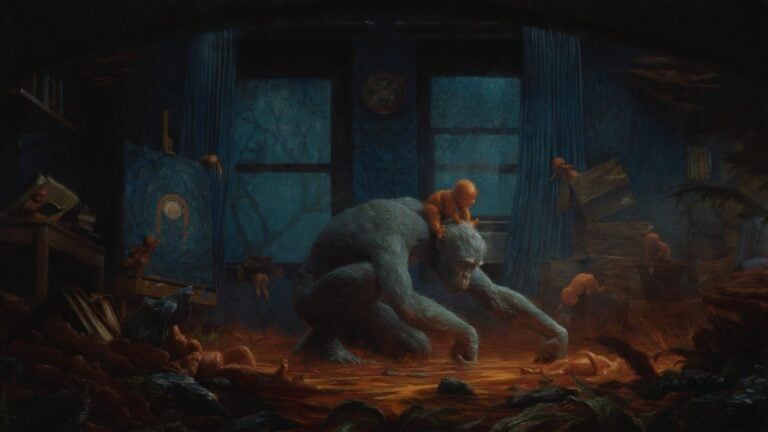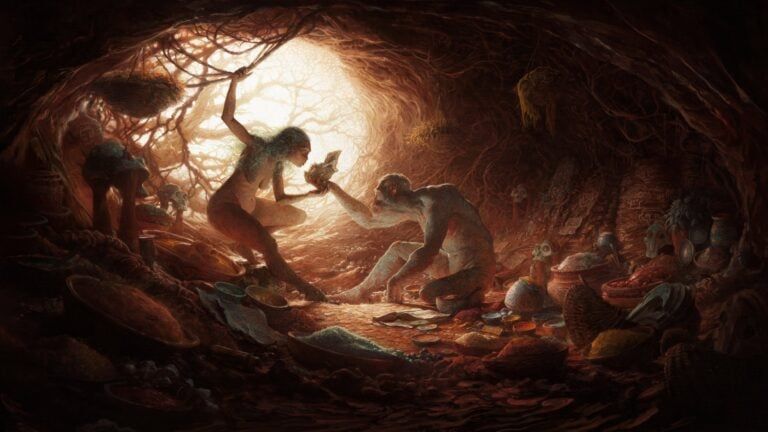In recent years, the union between art and technology has emerged from the niche it had occupied for over half a century, to expand more and more towards the vast public and insinuate itself into museums, galleries, institutions with an increasingly predominant presence (often to the detriment of quality ). But above all, thedigital art it is opening up to physical space, finding dimensions phygital and original exhibition methods, which increasingly push the boundaries between analogue and digital. The first exhibition “in real life” by digital native artist Sam Spratt in Venice is a key example of this phenomenon, to be observed carefully: the exhibition The Monument Game – which takes its title from Spratt’s most ambitious digital painting, the latest collaborative chapter in the series Lights – in fact marks a fundamental step in the evolution of NFTs after the end ofhype which characterized the phenomenon.
Sam Spratt’s “Luci” cycle in Venice
In the Dock Cantieri Cucchini space we find the entire cycle of Lightsa series of nine digital paintings with a baroque taste, but with an almost fantasy iconography: the story is that of Luci, a link between man and ape, who becomes a symbol of the personal evolution of the individual and of humanity as a whole at the same time. “The name derives from Australopithecus afarensis” explains Spratt, “one of the first humans we discovered, our ancient descendant. As far as I’m concerned, when you pass 30 years of life and you feel like you’ve missed the mark, it’s like you’ve missed our entire evolution, like you’ve missed everything that came before you: every book, every story, every song. And for me, starting over is like evolving from scratch, starting from our descendants”. Having passed the threshold of 30 years, Spratt therefore decided – after a moment of “break” – to start again from scratch, and to do it with Lights, somewhat telling his story for the first time. The cycle of Lights it is that of life: we start from birth and continue until death, and even beyond, through rebirth in the form of a collaborative network of consciousness.
The article continues below
The collaborative work “The Monument Game”
Each of the pieces in the series was sold through NFTs on the SuperRare platform. What is most fascinating, however, is the modality that involved the last and most ambitious chapter of the saga. For The Monument Gamein fact, Spratt digitally painted a huge epic landscape, with numerous characters, each telling a personal story. The artist initially sold 209 NFTs, used as entry “tickets” to participate in the game: each player would then be able to make an observation on the painting, and the best three would be rewarded. In Venice we can browse through those same observations while navigating the touch screen installed in the second room, but we can also try our hand at them, leaving our indelible comment. The variety of observers’ suggestions and the depth of some commentsthey leave me surprised: “I have always lived my life in a secondary role,” writes Player 212. “Wait, I’m not ready: life waits for no one, there is never enough time for anything”, confesses Observer 219.
1 / 4
 2 / 4
2 / 4
 3 / 4
3 / 4
 4 / 4
4 / 4
From NFTs to the “light box”: digital becomes material
Also worth highlighting is theinstallation aspect of the series Lights: for each work (except for The Monument Game, which remains tied to the screen to maintain the interactivity of the “game”) we try to maintain two fundamental characteristics of digital drawing – the very high definition and the brilliant colours, dictated by the backlighting of the screen – but leaving the digital medium. As? With the “technique, actually quite retro, from the ‘light box’, where we just use a wooden frame with a metal structure inside it, and then the same color temperature that the LEDs on my screen have. So we get the exact same light, contrast and color. Furthermore, the paintings are slightly tilted towards the wall, so that the light bounces, then passes through a diffusion layer to disperse into the transparent structure, and finally illuminates the print, protected by a matte varnish to avoid shine on the top. And then all the wiring is buried in the wall”.
Laura Cocciolillo
Artribune is also on Whatsapp. Simply click here to subscribe to the channel and always be updated








